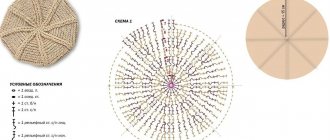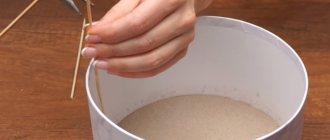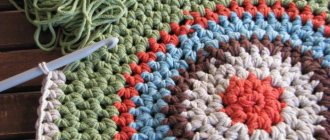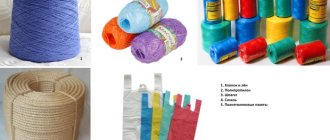A blanket is an indispensable thing in the house. A light blanket will be a good helper at any time of the year. Housewives often prefer to have several items of different designs. Many people prefer to know how to knit a blanket with their own hands.
A unique product of our own production will definitely satisfy any preferences related to appearance and other significant qualities of the thing.
Where to begin
For those who are not familiar with needlework, it is difficult to decide where to start. Blankets are considered large, but easy to implement things. Starting to develop your skills by knitting straight fabric is a great idea.
First you will have to master working with tools. Experienced needlewomen recommend learning the basics and trying crocheting and knitting. This will allow you to determine your preferences.
Before you start working on a large item, it is recommended that you read the instructions for beginners: how to knit a blanket. Then, decide on the materials and make the necessary calculations.
How to knit?
For a blanket, knitting made with knit stitches is suitable, and for this we remember how loops are knitted on knitting needles. We do the following:
- Having measured three meters of yarn, we make the first loop on the right wrist and fasten it.
- The thread is thrown over the index finger along the back of the hand and pulled away from you.
- The left hand is thrown into the loop formed between the fingers and the thread and, having grabbed the thread, we pull it towards ourselves and thread the finished loop again onto the wrist.
- We cast on the required number of loops in this manner. Be sure to align the loops, otherwise the fabric will be loose.
- The first row is performed in the opposite direction, starting from the outermost loop. The knitted loop remains without a hand, as if open. We knit this way until the end of the row, now the fabric lies in front of you on the table.
- The last row, to close the loops, makes one out of two loops, which is knitted with the next loop, and so on until the loops on the fabric are completely closed.
You should keep the rows and stitches even, because it is unusual to use your hands instead of knitting needles. Knitting such a blanket is quick and interesting.
Knitting without needles
Some find it so difficult to work with tools that the decision to abandon knitting needles becomes the only correct one. This does not mean that you will have to give up your dream of creating a knitted masterpiece.
There are techniques for working with your hands without the use of additional devices. The modern variety of suitable yarns contributes to the popularization of such techniques.A blanket knitted by hand without knitting needles seems fantastic to our grandmothers. Despite this, such an idea is quite realistic.
Read here - How to make a piggy bank with your own hands: 120 original photo ideas for a homemade piggy bank. Step-by-step production from paper, from a bottle, a can, plaster, Lego, wood
The work doesn't take much time. The finished item can be received in 1 evening. This prospect inspires many beginning craftswomen.
What will you need for the job?
You need thick, possibly twisted yarn, your hands and the desire to make a really beautiful thing.
As mentioned, I knitted two blankets using this technique that required two different types of yarn. For the black blanket I used 150 meters (5 packs) of thick German yarn Bernat Blanket Big Yarn, which I ordered from an online store. On Zoe's recommendation, I used 5cm stitches for this blanket, and the end result was a finished product measuring 102x203cm.
For the second blanket I needed the same amount of brown Sherpa yarn. It turned out to be 80x190 centimeters in size. I wanted this blanket to be a little tighter, so I used 3.5cm stitches to weave it.
If you, like me, are an absolute beginner and are just learning this technique, I would recommend that you take Zoe's advice to start your experiment with Bernat Blanket Big Yarn, although there is now a huge selection of this material in craft stores. It's much easier to work with because the yarn doesn't slip too much. It took me much longer to create a blanket using Sherpa yarn, even though I already knew a little about this technique. I had to go much slower to make sure I didn't accidentally unravel the loops I'd made earlier.
Believe me, they are very easy to unravel. As a beginner, I knitted the blanket quite quickly, but was unhappy with the result and decided to start over, focusing on making sure all the stitches were the same size. It took me less than a minute to unravel the entire blanket using Sherpa yarn. These threads are very smooth, as if silky, and do not tangle at all.
Using thick yarn
Most needlewomen know that knitting a blanket can take several months. This disappoints impatient craftswomen.
I want to get the results of my own work quickly. Using thick yarn is a good solution to the problem.
Not everyone knows how to knit a blanket from thick yarn with their own hands. The main thing is to choose the right tool, sit comfortably, and strictly follow the work plan.
Using thick yarn, complex patterns are rarely selected. It is better to stick to the simplest options, which will be an advantage for beginners in this matter.What size will the blanket be? How much yarn do you need to buy?
To knit a blanket, you first need to decide on its size. Such a product requires a much larger amount of yarn than a regular one. Even just a couple of rows wastes a lot of wool. An extra kilogram of yarn may not be a problem, but if there is not enough of it, your dream will not come true:
- for a children's blanket 120 centimeters long, 2 kilograms of yarn is enough,
- for a blanket 170 centimeters long and 100 centimeters wide, you need 4 kilograms of yarn,
- for a large blanket for an adult 140 centimeters by 170, 5.5-6 kilograms of material are needed.
IMPORTANT! Decide on the size of the product and purchase the correct amount of giant wool for it. You can also use the required thread length to calculate. Take a small amount of yarn and knit a small fragment of three to four rows, and then use the formula, the total area of the blanket, expressed in square centimeters, multiplied by the length of the thread, knitted fragment and divided by its area in square centimeters.
Things for kids
It is better to master craftsmanship on small products. Things for children are a good choice. Downsized, no-frills designs are a great place to start. A children's blanket, knitted with your own hands, will be an excellent incentive to continue your creative path.
- DIY photo frames are popular ways to create from scrap materials. 110 photo frame ideas: wooden frame with buttons, decor with stones and shells, salt dough frame, collages, decoupage
How to make a picture frame with your own hands? Choice of design and sizes. Instructions for making from scrap materials: cardboard, plinth, newspapers, buttons
- Cassette roller blinds: design examples, installation options, color choice (photo)
To create things for kids, it is popular to use lazy jacquards and relief textures. The technicians do not require professionalism.
It is enough to carefully study the rules of work, practice, and carefully monitor the diagram during execution.
Designer product
It is not necessary to plan a large one-piece piece. Continuous knitting is more difficult for beginners. You can assemble a thing from pieces. Individual motifs with a simple pattern are suitable for knitting.
The best solution: making a canvas from pieces of different colors. An unusual combination will be the highlight of the thing. A colored product will create an accent in the interior. You can use leftover yarn for knitting.
Plush threads
Recently, products made from plush yarn have been gaining popularity. Toys, clothes, interior items: there are many options for creativity. Hand-knitted plush blankets will be an excellent home decoration. The option is pleasant to the touch and practical.
The only disadvantage of plush yarn is the difficulty of working for beginners. The threads fray quickly when unraveling. The yarn is more difficult to fit into the product and does not allow the use of complex patterns.
- Do-it-yourself drawings on T-shirts - step-by-step instructions, necessary materials, advice from craftswomen. 120 photo ideas on how to make a print on a T-shirt
DIY gift baskets are a universal gift for any occasion! 80 photo ideas for decorating baskets: romantic, formal, children's, Italian, Brazilian, for movie fans
A DIY gift for your loved one: for Birthday, New Year, Valentine's Day, anniversary. 110 photo ideas for original and fun gifts that will surprise your loved one
Knitting a blanket yourself is not such a difficult task. Creativity and the desire to do something with your own hands will help you move in the right direction. Looking at a photo of a blanket knitted by yourself will help you confirm the correct choice and decide on the desired model.
How much thick yarn do you need for a blanket?
Calculation of the required amount of material for a particular product will depend on several indicators.
- Thread density and twist . The more the thread is twisted, the less volume it will have, which means more of it will be required.
- Complexity of weaves . Complex braids or braids require more thread. While garter stitch or satin stitch is more economical.
- Product dimensions. Well, it’s clear: the larger the size, the greater the consumption.
It matters what kind of yarn you knit with. At the moment, two types of special options can be distinguished.
- Giant , which is made from merino wool.
- Plush yarn of Turkish production “Alize Puffy”. Its thread is a series of loops that are intertwined to obtain the desired shape.
Attention! You can make your own knitting material by combining the fibers of several skeins into a single thread. Their number can be determined experimentally.
To calculate the quantity for a specific product, knit a small sample. Then multiply the area of the blanket by the length of the thread and divide by the area of the sample. You will get the required footage.
You can also use approximate calculations for a similar product.
DIY blanket photo
Do-it-yourself lambrequins - manufacturing instructions with patterns. Types of lambrequins, choice of variety. Preparation of material and tools. Step-by-step manufacturing guide- DIY beads are interesting photo ideas for creating original jewelry. Step-by-step master class on creating jewelry from scrap materials
- DIY Tilda for beginners. History of the toy, materials and tools for creation, step-by-step manufacturing process. Sewing tilde: secrets of mastery
Help the site, repost 
0










